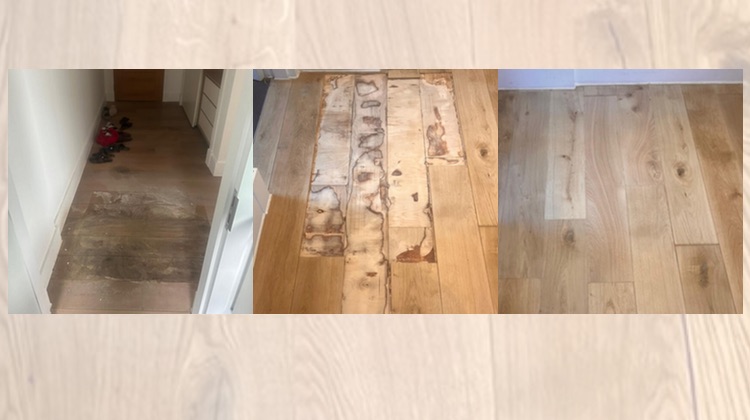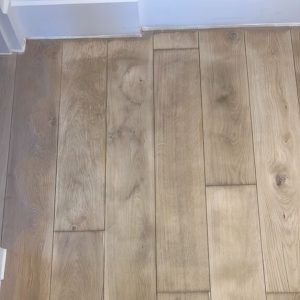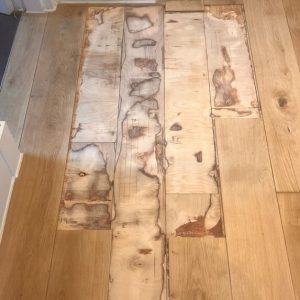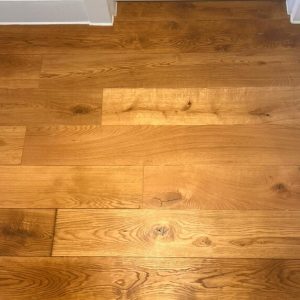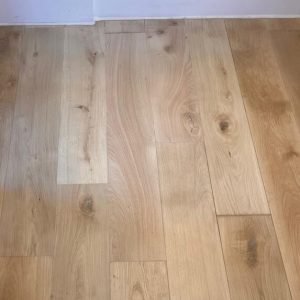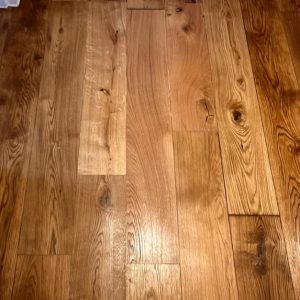Wood Flooring Water Damage
Dealing with Water Damage on Wood Floors: Prevention and Restoration
Introduction
Wood floors are a beautiful and timeless addition to any home, providing warmth and character. However, they are vulnerable to water damage, which can lead to costly repairs or even replacement if not addressed promptly. In this blog, we will explore the causes of water damage on wood floors, prevention tips, and steps to restore your flooring if damage occurs.
Understanding the Causes of Water Damage
Water damage on wood floors can result from various sources, each with its own set of challenges:
1. Plumbing Leaks: Leaking pipes, burst water heaters, or faulty appliances can release a significant amount of water onto your wood floors. This can lead to warping, cupping, or buckling of the wood.
2. Flooding: Natural disasters, such as floods or heavy rain, can cause water to infiltrate your home. Even small amounts of standing water can seep into the wood, causing swelling and damage.
3. Spills and Splashes: Everyday accidents like spilt drinks, pet bowl overflows, or wet shoes can introduce moisture to your wood floors, leading to stains and localized damage.
4. Humidity: High humidity levels, especially in poorly ventilated areas like basements, can cause wood to absorb excess moisture, resulting in expansion and warping.
Preventing Water Damage
Prevention is key to avoiding the headache and expense of repairing water-damaged wood floors. Here are some preventive measures to consider:
1. Regular Maintenance: Inspect your plumbing, appliances, and water-using fixtures regularly for leaks or issues. Address any concerns promptly.
2. Area Rugs and Mats: Place area rugs or mats in areas prone to spills, like the kitchen and near entryways. These can help absorb moisture and protect your wood floors.
3. Wipe Up Spills Immediately: Accidents happen, but swift action can prevent water from seeping into the wood. Always wipe up spills promptly to avoid staining or damage.
4. Control Humidity: Use a dehumidifier in areas with high humidity levels, like basements. Proper ventilation can also help regulate indoor humidity.
Restoring Water-Damaged Wood Floors
Despite your best efforts, accidents can still occur. If you notice water damage on your wood floors, here are the steps to restoration:
1. Assess the Damage: Determine the extent of the damage. Is it localized or widespread? Assess whether boards need to be replaced or if sanding and refinishing will suffice.
2. Remove Standing Water: If there is standing water, remove it immediately to prevent further absorption into the wood.
3. Dry Thoroughly: Use fans and dehumidifiers to dry the affected area completely. Ensure moisture levels in the wood return to normal.
4. Sand and Refinish: In cases of minor damage, sand the affected area to remove stains or imperfections. Then, apply a fresh finish to match the rest of the floor.
5. Replace Severely Damaged Boards: If cupping, warping, or buckling has occurred, you may need to replace damaged boards. This is a job best left to professionals to ensure a seamless blend with the existing floor.
6. Prevent Future Damage: Once your wood floors are restored, take extra precautions to prevent future water damage. Consider applying a water-resistant finish for added protection.
Our Work
Water Damage on an Oak Wood Floor
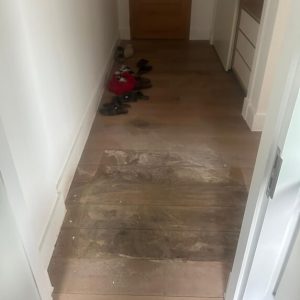
Our client contacted us when water began seeping through the ceiling, affecting the oak wood floor in their hallway. The flooring in this flat consisted of oak throughout, creating a seamless, threshold-free design. While the floor had some age, it had become dry and was in need of maintenance.
Upon initial inspection, we presented our client with a choice: addressing only the affected area or opting for a full floor renovation. We stressed that if we only restored the damaged portion, it would likely stand out due to differences in colour and texture compared to the rest of the floor. After careful consideration, the client agreed to proceed with a comprehensive renovation.
Challenges and Solutions: Sanding, Underfloor Heating, and Board Replacement
We began the restoration process with sanding, a common technique for rejuvenating wood floors. However, we quickly realized that sanding alone would not be sufficient to fully recover the damaged wood. The age and dryness of the floor had made it particularly vulnerable to water penetration, resulting in extensive damage.
- water damage after sanding
- wood floor planked out
Complicating matters was the presence of underfloor heating beneath the wood. We faced the challenge of preserving the electric underfloor heating while addressing the water damage. To overcome this hurdle, we decided to carefully plank out the wood veneer to a depth that allowed us to introduce fresh wood on top. This approach ensured the preservation of the underfloor heating system.
Restoration and Client Satisfaction
Following the careful planking and drying process, we resumed sanding and refinishing the wood floor. Despite the initial setbacks, our team’s dedication and expertise paid off. We successfully restored the oak wood floor to its former glory, leaving the client delighted with the final result.
- repaired, sanded and oiled
- wood replaced
- repaired, sanded & oiled
Conclusion
Water damage on wood floors can be a homeowner’s nightmare, but with proper prevention and swift action, you can mitigate its impact and restore your floors to their former glory. Regular maintenance, quick cleanup of spills, and humidity control are your allies in preserving the beauty and integrity of your wood flooring. In cases of severe damage, don’t hesitate to seek professional help to ensure a successful restoration. By being proactive, you can enjoy your wood floors for years to come, even in the face of potential water damage.



